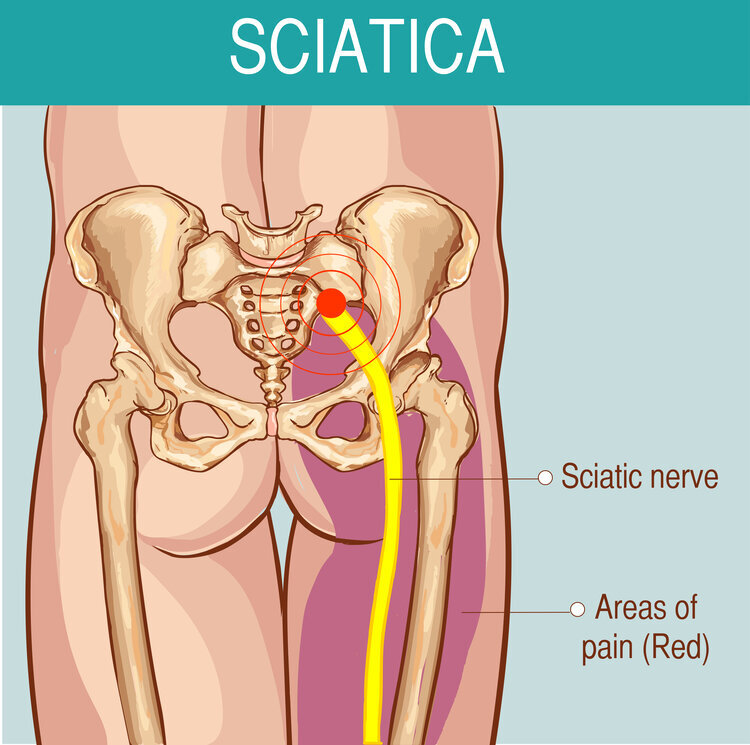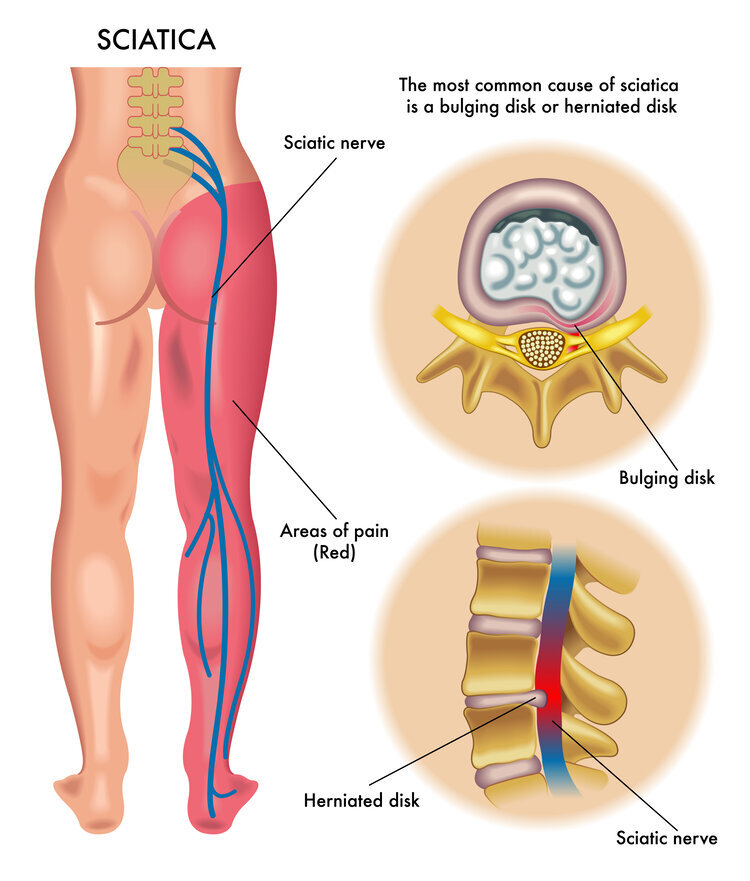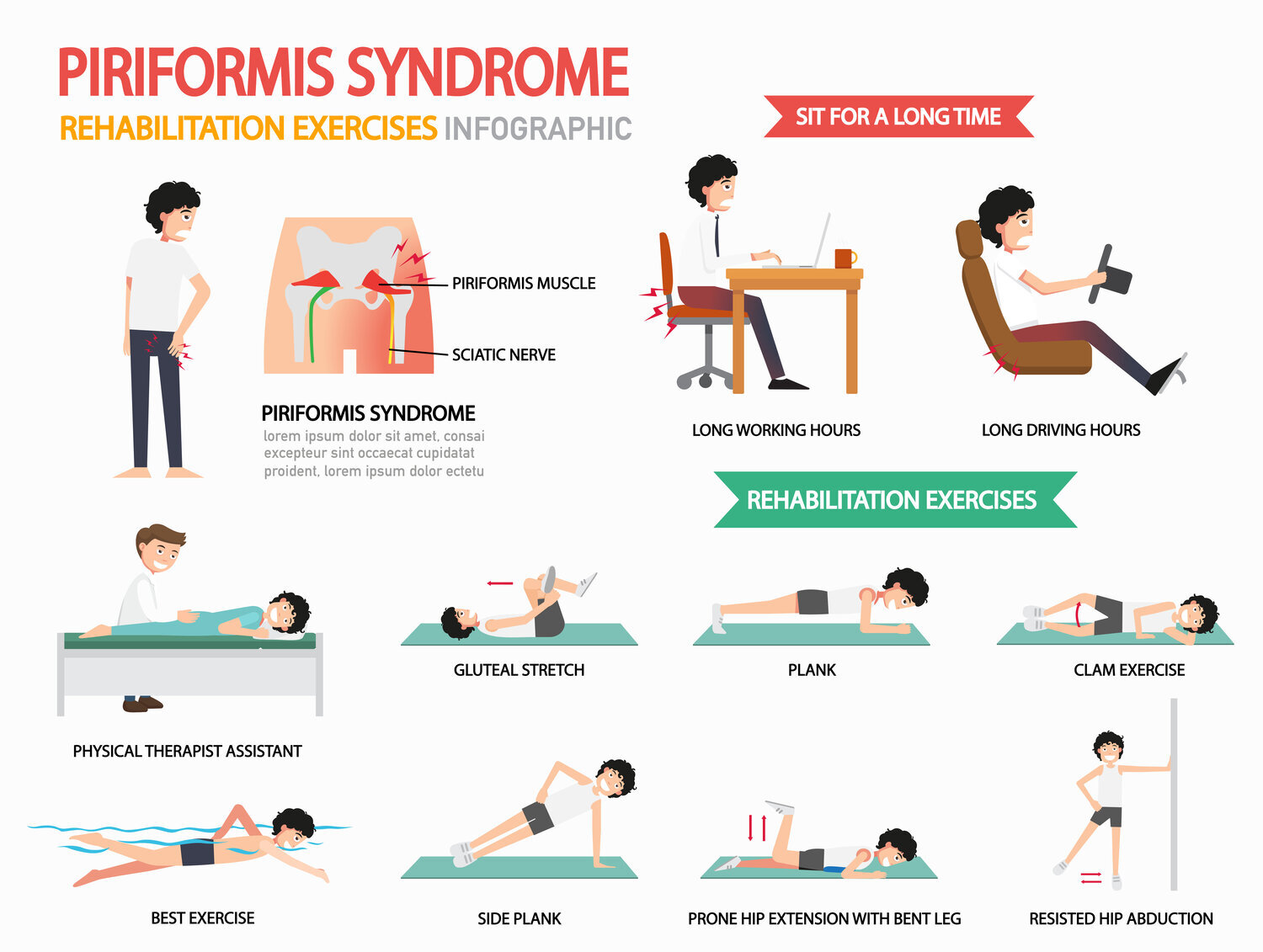Acupuncture for Sciatica
Sciatic Pain Acupuncture: An Effective and Safe Treatment Option
Sciatica affects millions of people worldwide, causing pain that can significantly hinder daily activities and reduce quality of life. While traditional treatments exist, they often provide only temporary relief or come with undesirable side effects. Recent studies have highlighted acupuncture as a highly effective and safe alternative for treating sciatica, offering hope to those seeking long-term relief.
Key Points
Significant Pain Relief: Recent studies show that acupuncture significantly reduces sciatic pain compared to conventional treatments.
Improved Functionality: Acupuncture enhances pain thresholds and functional abilities in patients with sciatica.
Lower Recurrence Rates: Patients receiving acupuncture experience fewer recurrences of sciatica symptoms.
Favorable Safety Profile: Acupuncture has fewer adverse effects than standard medication treatments.
Holistic Approach: Acupuncture addresses both the symptoms and underlying causes of sciatica, promoting overall well-being.
What Is Sciatica?
Sciatica refers to pain that radiates along the path of the sciatic nerve, which runs from the lower back through the hips and buttocks and down each leg. It is not a condition itself but a symptom of an underlying problem. Sciatica typically affects only one side of the body and can range from a mild ache to sharp, burning pain.
Sciatica is due to compression of the sciatic nerve which results in pain radiating down the back or side of the leg. It is commonly caused by nerve root compression at various levels in the spine or inflammation in the the sciatic nerve itself.
Symptoms associated with sciatica are low back pain, numbness or tingling down the leg as far as the foot, and weakness of the affected areas.
The sciatic nerve originates in the low back at spinal nerve levels from L4 to S3. It goes through the pelvis, then down to the knee, where it branches out into the tibial and peroneal nerves. The tibial nerve travels through the posterior lower leg, and the peroneal nerve travels down the lateral part of the lower leg. This nerve pathway explains why people can experience numbness and tingling all the way down the leg when they have sciatica.
Sciatica Symptoms
Common symptoms of sciatica include:
Lower Back Pain: Mild to severe discomfort in the lower back.
Leg Pain: Sharp, shooting pain that extends from the buttock down the back or side of the leg.
Numbness or Tingling: A pins-and-needles sensation in the leg or foot.
Muscle Weakness: Weakness in the affected leg or foot.
Difficulty Moving: Reduced mobility due to pain or muscle weakness.
These symptoms can worsen when sitting, coughing, or sneezing.
Causes of Sciatica
Sciatica occurs when the sciatic nerve is compressed or irritated. Common causes include:
Herniated or Degenerative Disc: Discs that cushion the vertebrae can degenerate or herniate, pressing on the nerve roots. This accounts for 85% of sciatica cases.
Spinal Stenosis: Narrowing of the spinal canal can compress nerves.
Spondylolisthesis: A condition where one vertebra slips over another, pinching the nerve.
Piriformis Syndrome: Tightening or spasms of the piriformis muscle can irritate the sciatic nerve.
Pregnancy: Weight gain and hormonal changes can lead to nerve compression.
Trauma or Injury: Accidents causing fractures or dislocations of the spine.
Muscle Tightness and Trigger Points: Tight muscles and tender spots (trigger points) in the lower back, buttocks, or legs that can compress the sciatic nerve at various points along its path, leading to pain and discomfort.
Sciatica's prevalence varies widely, affecting approximately 1.2% to 43% of the population, with an annual incidence of 1% to 5%. It is most common during the fourth decade of life and is more prevalent among physical laborers.
Standard Sciatica Treatments
Traditional treatments for sciatica aim to relieve pain and address the underlying cause:
Medications: Non-steroidal anti-inflammatory drugs (NSAIDs), muscle relaxants, and analgesics. However, NSAIDs can have side effects like gastrointestinal issues and may not provide long-term relief.
Physical Therapy: Exercises to improve posture, strengthen muscles, and enhance flexibility.
Steroid Injections: Corticosteroid injections reduce inflammation around the irritated nerve but offer only temporary relief.
Surgery: In severe cases, procedures like discectomy or laminectomy may be performed to relieve pressure on the nerve. Yet, long-term benefits are still under debate, with some studies showing no significant difference compared to conservative treatments after 1-2 years.
Alternative Therapies: Massage, chiropractic adjustments, dry needling, and acupuncture.
While these treatments can help, many patients experience persistent or recurrent pain, leading to a search for more effective and safer alternatives.
Acupuncture for Sciatica
Acupuncture is a non-pharmacological treatment derived from Traditional Chinese Medicine (TCM) that involves inserting thin needles into specific points on the body. It aims to restore physiological process via the nervous system and promote natural healing.
How Acupuncture Helps with Sciatic Pain:
Pain Relief: Stimulates the release of endorphins, the body's natural painkillers.
Reduces Inflammation: Modulates inflammatory responses, decreasing swelling and pressure on the nerve.
Muscle Relaxation: Relieves tightness in muscles like the piriformis, reducing nerve compression.
Improves Nerve Function: Enhances blood flow and nerve conduction, promoting healing.
Regulates Nervous System: Modifies pain pathways and reduces the activation of microglia involved in neuropathic pain.
Traditional acupuncture for sciatica typically focuses on points along the bladder and gallbladder meridians, which correspond to the sciatic nerve pathway. Treatments are personalized based on the patient's symptoms and underlying causes, utilizing techniques such as manual acupuncture (MA), electroacupuncture (EA), and warm acupuncture (WA).
Piriformis Syndrome & Pseudo-Sciatica
Another reason that the sciatic nerve can be compressed is due to tight muscles around it that press on it. This can mimic the sciatica pain felt down the leg from spinal nerve root compression but it not due to spinal compression or nerve inflammation. Dr. Janet Travell identified trigger point patterns in the piriformis and gluteus minimus muscles that can mimic sciatic pain.
The piriformis muscle is located right above the sciatic nerve in most people. If that muscle gets tight or inflamed it can press on the sciatic nerve and cause pain, tingling, and numbness down the back of the leg. This condition is known as piriformis syndrome and it more of a muscle issue than a nerve issue.
The gluteus minimus muscle is the deepest of the gluteal muscles and is located on the outer hip. When that muscle forms a trigger point, it can cause a referral pattern down the side of the leg which Dr. Travell calls “pseudo-sciatica.”
Acupuncture for Sciatica Research Findings
Recent studies have provided strong evidence supporting acupuncture as an effective and safe treatment for sciatica.
2023 Meta-Analysis Highlights
A comprehensive meta-analysis published in Frontiers in Neuroscience in 2023 reviewed 30 randomized controlled trials involving 2,662 participants to assess the efficacy and safety of acupuncture for sciatica. Key findings include:
Superior Pain Relief: Acupuncture significantly reduced pain intensity compared to medication treatments. Patients reported greater decreases in Visual Analog Scale (VAS) scores, indicating less pain.
Improved Functional Outcomes: Patients receiving acupuncture showed better improvements in pain thresholds and overall function.
Lower Recurrence Rates: Acupuncture was associated with a reduced risk of sciatica symptoms returning, suggesting long-term benefits.
Safety Profile: Fewer adverse events were reported in the acupuncture groups compared to medication groups. Minor side effects, such as slight bruising or bleeding at needle sites, were minimal and transient.
2024 Clinical Trial Findings
A randomized clinical trial published in JAMA Internal Medicine in 2024 further supports these results:
Long-Term Pain Reduction: Patients with chronic sciatica from herniated discs experienced significant pain relief that persisted for up to 52 weeks after acupuncture treatment.
Improved Disability Scores: Functional abilities, measured by the Oswestry Disability Index, improved notably in the acupuncture group.
Safe Intervention: No serious adverse events were reported, emphasizing acupuncture's safety.
Statistical Insights
Prevalence: Sciatica affects approximately 1.2% to 43% of the population, with an annual incidence of 1% to 5%.
Herniated Discs: Account for 85% of sciatica cases due to nerve root compression.
Impact on Quality of Life: Persistent sciatica can lead to neurological deficits and functional disability, significantly affecting quality of life and increasing healthcare costs.
Mechanisms of Action
Research suggests that acupuncture alleviates sciatica symptoms by:
Regulating Nervous System Activity: Balancing excitatory and inhibitory neurotransmitters.
Modulating Inflammatory Mediators: Reducing pro-inflammatory cytokines that contribute to pain.
Influencing Microglial Activation: Altering glial cell function in the central nervous system to reduce neuropathic pain.
Exercises for Sciatica
In addition to acupuncture, certain exercises can help alleviate sciatic pain:
Swimming: Low-impact activity that strengthens the back and core muscles.
Gluteal Stretching: Relieves tension in the piriformis and gluteal muscles.
Planks and Side Planks: Strengthen the core and improve spinal stability.
Clamshells: Activate hip abductors and improve pelvic stability.
Hip Extensions: Strengthen the lower back and gluteal muscles.
Resisted Hip Abduction: Targets outer hip muscles to reduce strain on the sciatic nerve.
Leg and Core Strengthening: General exercises to support spinal alignment and reduce nerve compression.
Note: Always consult a healthcare professional before starting new exercises, especially if you have severe pain or other medical conditions.
Conclusion
Sciatica can be a debilitating condition, but acupuncture offers a promising, effective, and safe treatment option. By addressing both the symptoms and underlying causes, acupuncture can provide significant pain relief, improve function, and enhance quality of life. Its non-pharmacological nature makes it an attractive alternative for those seeking to avoid the side effects of medications or the risks associated with surgery.
If you or someone you know is suffering from sciatica, consider exploring acupuncture as part of a comprehensive treatment plan.
Over to you
If you liked this article, please share with friends and family who may be suffering with sciatica or sciatic pain.
Sources:
Travell, J. G., Simons, D. G. (1993). Myofascial pain and dysfunction: The trigger point manual. London: Lippincott Williams & Wilkins.
Giuffre BA, Black AC, Jeanmonod R. Anatomy, Sciatic Nerve. [Updated 2023 Nov 16]. In: StatPearls [Internet]. Treasure Island (FL): StatPearls Publishing; 2023 Jan-. Available from: https://www.ncbi.nlm.nih.gov/books/NBK482431/
Qin, Z., Liu, X., Wu, J., Zhai, Y., & Liu, Z. (2015). Effectiveness of Acupuncture for Treating Sciatica: A Systematic Review and Meta-Analysis. Evidence-based complementary and alternative medicine : eCAM, 2015, 425108. https://doi.org/10.1155/2015/425108
Zhang, Z., Hu, T., Huang, P., et al. (2023). The efficacy and safety of acupuncture therapy for sciatica: A systematic review and meta-analysis of randomized controlled trials. Frontiers in Neuroscience, 17, 1097830. https://doi.org/10.3389/fnins.2023.1097830
Tu, J.-F., Shi, G.-X., Yan, S.-Y., et al. (2024). Acupuncture vs Sham Acupuncture for Chronic Sciatica From Herniated Disk: A Randomized Clinical Trial. JAMA Internal Medicine. Published online October 14, 2024. https://doi.org/10.1001/jamainternmed.2024.5463
Valat, J. P., Genevay, S., Marty, M., Rozenberg, S., & Koes, B. (2010). Sciatica. Best Practice & Research Clinical Rheumatology, 24(2), 241–252. https://doi.org/10.1016/j.berh.2009.11.005
Konstantinou, K., Dunn, K. M., Ogollah, R., & Hay, E. M. (2015). Characteristics of patients with low back and leg pain seeking treatment in primary care: Baseline results from the ATLAS cohort study. BMC Musculoskeletal Disorders, 16, 332. https://doi.org/10.1186/s12891-015-0787-8
Ropper, A. H., & Zafonte, R. D. (2015). Sciatica. New England Journal of Medicine, 372(13), 1240–1248. https://doi.org/10.1056/NEJMra1410151






